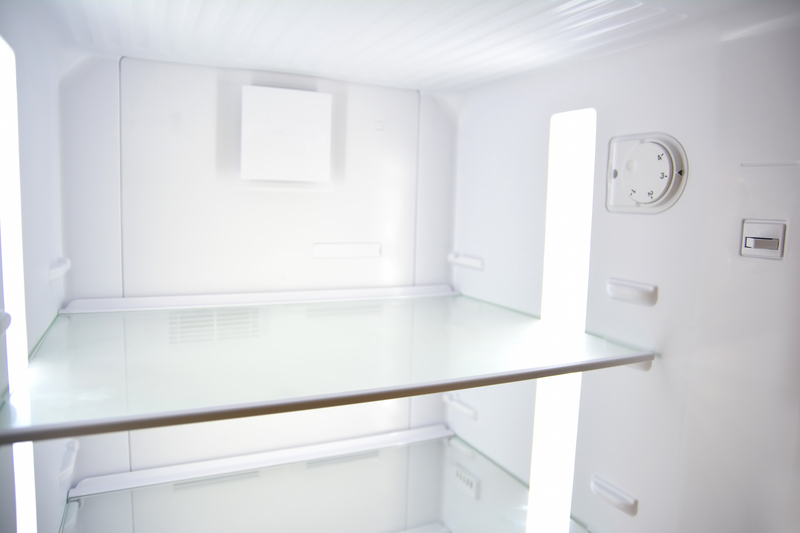How to Create a Packing Plan That Ensures a Safe Move
Posted on 17/06/2025
How to Create a Packing Plan That Ensures a Safe Move
Moving to a new home or office is an exciting yet challenging process. One of the most critical elements for a smooth transition is creating a packing plan that ensures a safe move. Without a comprehensive packing strategy, your possessions could be damaged, lost, or the process could become unnecessarily stressful. In this article, you will discover practical tips and expert insights on packing for a safe move, safeguarding your belongings, and establishing peace of mind throughout the relocation.
Why is a Safe Packing Plan Essential?
A packing plan for a safe move is more than just organizing boxes; it is about protecting your valuables, minimizing risks, and making the entire moving process efficient. Without careful preparation, you increase the chance of losing items, damage, or injury. Moreover, movers and insurance companies often require detailed inventories and responsible packing as conditions for coverage.
- Prevents damage to items during transit
- Helps keep track of your belongings
- Reduces stress on moving day
- Speeds up unpacking at the destination
- Enables easier claims in case of loss or damage

Step-by-Step Guide to Creating a Safe Packing Plan
1. Start with a Moving Inventory
Before you pack a single box, compile a comprehensive inventory of every item you plan to move. This is the foundation of your safe packing plan. Walk through every room, noting furniture, electronics, kitchenware, clothing, and even items in sheds or garages.
- Use packing checklists: Download or create checklists room-by-room.
- Photographic evidence: Take photos of valuable or fragile items for additional insurance documentation.
2. Declutter and Organize
A key aspect of packing for a safe move is only taking what you need. De-cluttering saves time, reduces moving costs, and lowers the chances of packing items unsafely due to space constraints.
- Sort items by necessity: Keep, donate, sell, or discard.
- Organize by category: Group similar items together for more efficient packing and tracking.
3. Gather the Right Packing Supplies
The quality of your packing materials is crucial. Investing in sturdy boxes, bubble wrap, packing paper, and tape can make all the difference when ensuring a safe move.
- Box variety: Use small boxes for heavier items, large boxes for light, bulky items.
- Specialty packing materials: Dish barrels, wardrobe boxes, mattress covers, and mirror cartons offer extra protection for unique items.
- Labeling supplies: Permanent markers and color-coded labels help keep everything organized.
4. Create a Detailed Room-by-Room Packing Plan
Safe packing for your move means packing methodically, one space at a time. Assign a timeline and strategy for each room, prioritizing areas you use less often.
- Start with storage areas: Attics, basements, and garages can take the most effort.
- Pack bedrooms and living areas next: Keep essentials out for daily use until moving day.
- Leave the kitchen for last: This area often requires special care for fragile and perishable items.
Best Practices for Packing to Ensure a Safe Move
Use Proper Packing Techniques
Certain packing techniques can greatly reduce the risk of damage and make unpacking more manageable. Here are some time-tested approaches for safe moving:
- Pad and cushion all fragile items: Wrap each item individually in packing paper or bubble wrap.
- Fill empty spaces: Use crumpled paper or foam to prevent shifting during transport.
- Disassemble large furniture: Remove legs, shelves, and hardware to avoid breakage; keep screws and small parts in labeled bags taped to the item.
- Seal liquids: Secure bottle openings, then double-bag to prevent leaks.
Label Everything Clearly
An excellent packing plan that ensures safety depends on labeling your boxes clearly and systematically.
- Room designation: Mark the destination room for every box.
- Contents summary: Briefly list key items inside.
- Fragile or special instructions: Clearly note "Fragile," "This Side Up," or "Open First" when necessary.
Pay Special Attention to High-Value Items
Jewelry, documents, electronics, and collectibles need special consideration in your packing plan.
- Keep valuables with you: If possible, transport these in your own vehicle.
- Insure high-value items: Check if your moving or homeowner's insurance covers them during transit -- get extra coverage if needed.
Prepare an Essentials Box
Packing for a safe and comfortable move means anticipating immediate needs at your new home. Prepare a box or suitcase with:
- Clothing for a few days
- Toiletries and personal items
- Bedding and towels
- Basic kitchen supplies
- Medications and important documents
Advanced Packing Tips for a Safe Move
Utilize Technology
Modern tools and apps can elevate your packing plan for a safe move
- Inventory apps: Keep track of box numbers and contents digitally.
- QR codes: Attach QR codes to boxes that link to online inventories or lists.
Communicate with Your Movers
Clear communication with your moving company is vital. Share your packing plan, any special instructions, and concerns about fragile items. Ask how they handle safely packed belongings and what measures they take to avoid damage.
Maintain a Visual Map
Create floor plans and box maps that indicate where each item should go in the new location. This not only helps movers but reduces the risk of damage during the unloading process.
Common Packing Mistakes to Avoid
- Procrastinating: Waiting until the last minute can lead to rushed, unsafe packing.
- Overloading boxes: Heavy boxes may break or become too difficult to move safely.
- Leaving empty spaces: This can cause items to jostle and break during transit.
- Ignoring labeling: Unlabeled boxes often lead to confusion and mishandling.
- Forgetting insurance: Valuable items need appropriate coverage.
Should You Hire Professional Packers or DIY?
Depending on your budget, time constraints, and the number of breakables you own, you may consider hiring professional packers. They bring packing expertise and specialty supplies to guarantee that your possessions move safely. However, if you decide to do it yourself, following a detailed plan to pack for a safe move is essential.
- Pros of hiring professionals: Efficiency, expertise, and reduced risk of damage.
- Cons: Higher cost, less control over packing methods.
- DIY pros: Cost savings, full control, and a more personal approach.
- DIY cons: Time-consuming and potentially more stressful without proper planning.
After the Move: Unpacking and Settling In Safely
A safe move doesn't end when you arrive at your new home -- it only concludes after successful unpacking and organizing. Here's how to make sure your belongings are safely integrated into your new space:
- Check inventory: Ensure all boxes and items have arrived.
- Inspect for damage: Open boxes starting with essentials and fragile items.
- Organize as you unpack: Place items in their intended spots to avoid future breakage or loss.
- Dispose of packing materials responsibly: Recycle or donate boxes and packing supplies when possible.

Frequently Asked Questions: Packing Plans for a Safe Move
How far in advance should I start packing for a move?
Begin planning and packing at least 6-8 weeks before moving day. This allows time for decluttering, sourcing supplies, and organizing items without rushing.
What items should I never pack with movers?
Important documents, jewelry, cash, medications, and high-value electronics are best kept with you rather than in the moving truck.
How do I ensure my fragile items are protected?
Proper wrapping, cushioning, clearly labeled boxes, and stacking fragile boxes on top are key techniques.
Conclusion: Build the Perfect Packing Plan for a Safe Move
Creating a packing plan that ensures a safe move requires of preparation, strategy, and care. By starting early, using the right supplies, and packing methodically, you can protect your belongings and reduce stress. Whether you hire professionals or do it yourself, following an organized approach to packing will safeguard your possessions and provide peace of mind throughout your move. Remember, your move's success depends not just on transportation, but on the planning and care you invest in every box.
Ready to move safely? Use this guide to build your own comprehensive safe packing strategy and make your transition as smooth--and secure--as possible.



